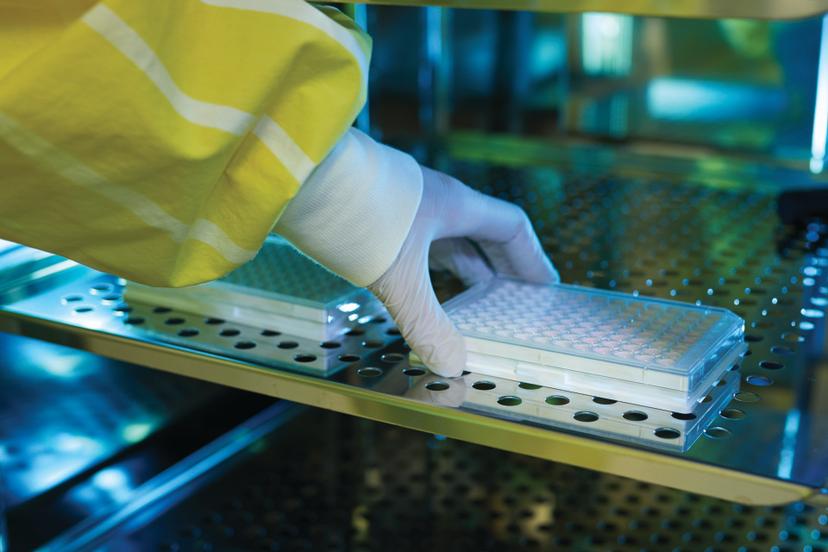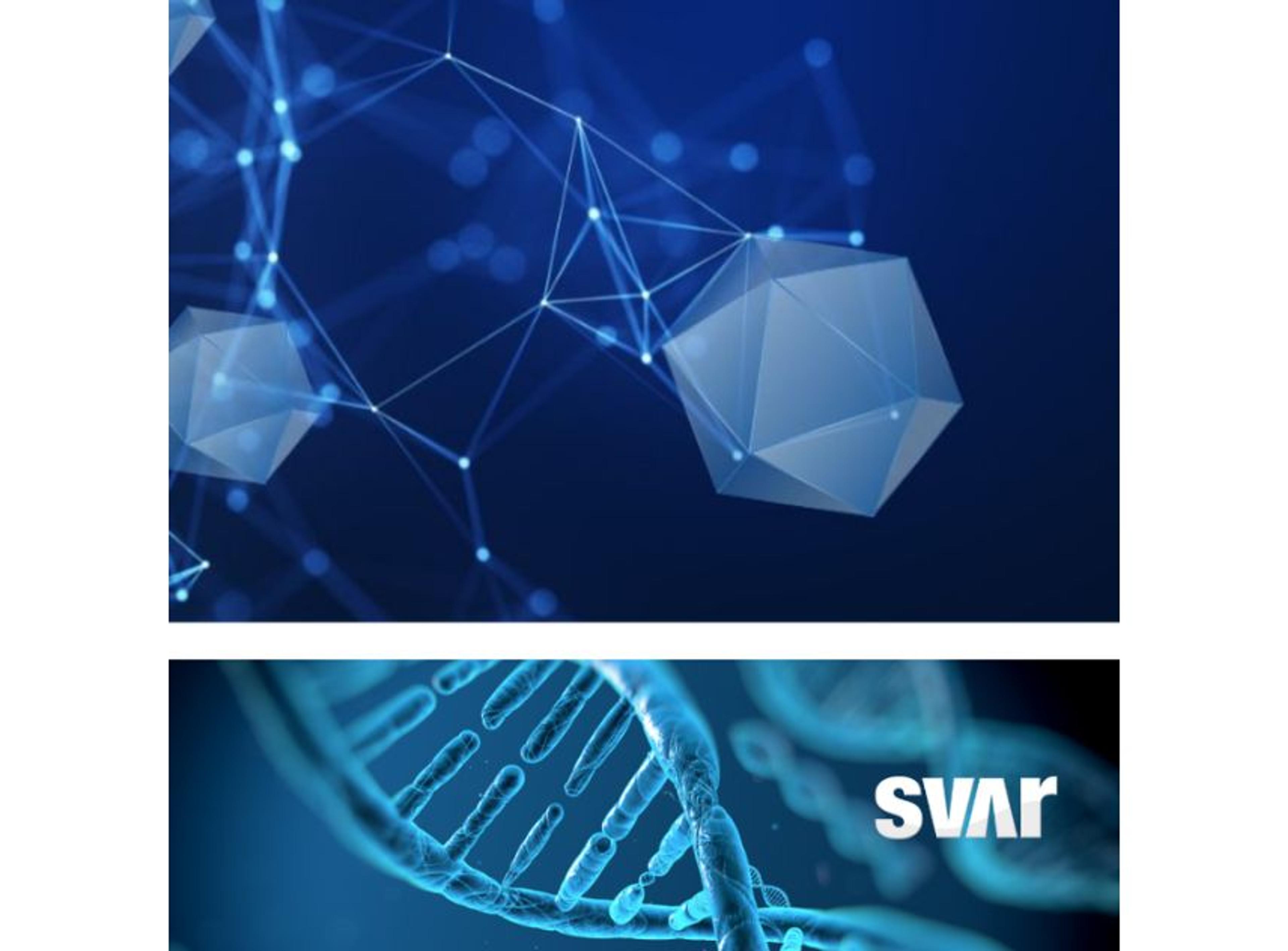Mechanism-linked potency assays drive gene therapy success
VectorBuilder’s Alan Griffith explains the value of MoA-reflective potency assays for gene therapy development and the benefits of working with assay specialists like Svar Life Science
25 Nov 2025Over the past quarter century, gene therapy has travelled a winding road, from early clinical enthusiasm, through sobering lessons of safety and efficacy, to a renewed momentum powered by improved vector platforms and deeper scientific understanding. More than twenty gene therapy products have now gained regulatory approval worldwide, offering life-changing treatments for conditions once considered beyond modern medicine.

“You might think you already have a potency model, but if it can’t be validated (be robust and reproducible), you’ll never get beyond Phase III. Spend time refining it early and bring in cell-based assays as soon as you can,” says Alan Griffith, Head of Operations at VectorBuilder
Despite this progress, developing these treatments hasn’t become much easier. Gene therapies present a unique set of analytical challenges beyond those encountered with conventional biologics, requiring intricate and time-intensive bioassays to demonstrate purity, safety, and potency at every stage of development.
Alan Griffith, Head of Operations at VectorBuilder, understands these challenges better than most. With more than 15 years’ experience in the gene therapy space, including at several start-ups, he has seen the field from every angle, from early development and manufacturing to quality control and regulatory engagement. Now working within an end-to-end CDMO, he draws on that experience to help clients navigate the same journey. “I’ve made plenty of mistakes around vector optimization, vector design, and potency modelling,” he says with a laugh. “The whole idea now is that I’m able to guide our global clients in ways to avoid the same pitfalls. Knowing what not to do is often just as important as knowing what to do in a volatile product lifecycle for ATMPs.”
The role of potency testing
Potency assays, the critical tests that determine whether a gene therapy truly performs its intended biological function and anchors clinical dose justification, sit at the heart of many development challenges. For gene therapies, potency testing means demonstrating that the delivered genetic payload not only reaches the target cells but also restores or replaces the intended biological activity. These assays underpin every stage of development, from early research through market approval, forming an essential part of lot release, comparability, and stability programs.
According to Griffith, potency work is no longer just about satisfying regulators; it’s a practical way to stress-test a therapy across the entire lifecycle. “Ten years ago, you only really needed to understand the MoA (mechanism of action) and have a validated potency model by Phase III,” he says. “Now, it’s about doing it as early as you can — not just for patient safety, but for your own benefit, too. In essence, it’s the keystone of release testing and comparability. To put it in another CMC context, when you scale up, change plasmids, or switch CDMOs, regulators require comparability — in other words, assurance that the product remains equally potent.”
The most effective developers, he adds, are those that use early potency testing to ask hard questions about MoA and reproducibility before they arise later with regulators.
But that’s easier said than done. Potency assays for gene replacement therapies are notoriously difficult to develop and validate, and their intrinsic design is highly dependent on the underlying biology, the specific DNA sequence, and even the configuration of the DNA sequence being replaced.
Linking assays to the mechanism of action

Utilizing their proprietary iLite® reporter-gene system, Svar offers cell-based potency assays that are tailored to reflect the drug’s mechanism of action across early research, clinical development and commercial release. Learn more here.
One of the greatest challenges in potency assay development is ensuring that the assay readout reflects the therapy’s MoA. Because gene therapies act through complex and often only partially understood pathways, developers often rely on multiple assays that overlap together to demonstrate product function.
“In some cases, the MoA is still poorly understood,” explains Griffith, “So developers have had to rely on other solutions like surrogate potency models or secondary readouts that correlate with the expected clinical outcome, while they fuel their efforts to understand how to build a suitable direct cell-based assay.”
Equally, he cautions that some surrogate non-functional measures, such as viral genome copy number or capsid copy number, can present challenges when assessing or developing potency assays. “Most people will know PCR and use qPCR titration to determine vector genome or capsid copy number. You get a vg/mL (viral genome per milliliter) value in one technician’s hands, and the next day that same person can get a slightly different number” he says. “At scales of 10¹¹ to 10¹⁴ particles, that seemingly small difference becomes huge and problematic. Untrained eyes will see 4.812 versus 5.212 and think these numbers are close, but they’re nowhere near the same number at that exponential scale. In this case, 400 billion vector genomes is the difference.”
“No one’s fully solved that titre variability problem,” he adds. “Even with automation, you still get variable copy numbers. It’s a good example of where non-functional assays can be misleading compared to biological activity.”
For Griffith, this underscores the importance of developing cell-based potency assays that are directly tied to the therapy’s MoA. “Once you understand how important that link is, it really dictates how complex your overall program will be,” he says. “Some people have even found no link between therapeutic MoA and potency, and in extreme cases can even re-prioritize and rank their pipeline based on how difficult it is to do a potency model from the get-go. However, most developers at single or small pipeline companies don’t find out this difficulty before it’s too late. Investors are also wising up.”
Potency assays can act as early screening tools, helping developers identify roadblocks sooner. “It’s relatively easy to put a transgene in a mouse model or an animal model, or even cells, and get a readout that can be biased (the measurement/test bias phenomenon),” says Griffith. “But a true validated potency model removes that doubt/bias. You can see that you are getting the transgene or the payload correctly expressed in the correct cell, the same kinetics, trafficked the same way, and that really allows you to predict how it works. Then you have a great base to continue on your development path to IND and beyond.”
Once established, a MoA-reflective potency model can then serve as a feedback mechanism for manufacturing. “Ironically, you then have a very good way to actually stress-test your manufacturing (CMC) because you know your potency model is so robust,” he adds.
Partnering for potency: the value of assay specialists
Even with the best planning, developing a robust potency assay remains one of the most technically demanding aspects of gene therapy development. Variability is a persistent obstacle, driven by inherent complexity and unpredictability of biological systems. This is where experienced assay specialists such as Svar Life Science (Svar) can make a decisive difference, says Griffith, recalling a project they helped progress to more detailed discussions with investors and regulators.
“We had a tricky MoA,” he says. “We had a very good potency model that wasn’t cell-based initially, but we had to then correlate that to a cell-based model for a Phase III program, and it just didn’t align very well at all. Clearly, it worked, but we couldn’t reconcile the two readouts.”
That mismatch created both scientific and regulatory challenges, and this is where Svar’s expertise proved invaluable. “They helped us bring the project to the next level not only from a technical perspective but also with how to build the right narrative for regulators based of previous work,” says Griffith. “Sometimes it’s not what you say, it’s how you say it. The regulators aren’t trying to catch you out, but they will definitely say no or ask you to repeat, or completely refine the assay you propose, if you present it the wrong way.”
While VectorBuilder has strong in-house analytical capability, Griffith believes working with dedicated assay specialists brings unique advantages, especially when time, reproducibility, and regulatory readiness are at stake. “There’s a difference between the ability to do something and the ability to do it time and time again,” he says. “That’s where a specialist partner like Svar really stands out; their approach and their capabilities are intrinsically linked to long-term experience in this exact area. It doesn’t make sense for VectorBuilder to devise hundreds of different assays for our many clients who must drive the request in the first place. Often ‘the juice isn’t worth the squeeze’”.
With the support of specialists, assay development starts faster and with fewer blind spots. “A specialist doesn’t start from scratch,” he explains. “They know from twenty other projects what a good starting point looks like.”
He gives an example: “If there are ready-made cells for an initial screen and you’re faced with buying twenty different lines to see which work best, a specialist like Svar has already done that work,” he says. “They can tell you the top two performers, and that speed is invaluable when timelines are tight.”
Advice for developers
Speaking from experience, Griffith offers several pieces of advice for teams planning potency assay programs. “It’s an overused phrase, but start with the end in mind,” he says. “Many developers say this, but from what I can see, not many actually live these words.”
“Don’t kick the can down the road,” he continues. “You might think you already have a potency model, but if it can’t be validated (be robust and reproducible), you’ll never get beyond Phase III. Spend time refining it early and bring in cell-based assays as soon as you can.”
He also stresses the importance of interdepartmental collaboration. “You might have a potency group troubleshooting an assay with cells they’ve never handled, while the cell culture team for example, three doors down in your facility, has years of experience handling them,” he says. “Get them involved, bring people in from different teams; be more open and have a kind of start-up mentality.”
Finally, Griffith emphasizes the value of working with partners who bring not just technical skill, but a genuine sense of collaboration. “You want to work with a team that understands your challenges, asks the right questions, and is invested in the outcome,” he says. Rather than charging for every small work package, he believes true partners focus on helping both companies succeed and can even backload costing to save time.
“That for me is classic business— proper B2B,” he adds. “In our still-maturing sector, that kind of relationship is everything. It’s what makes collaborations successful, and it’s why Svar would be the kind of company I’d always recommend.”


